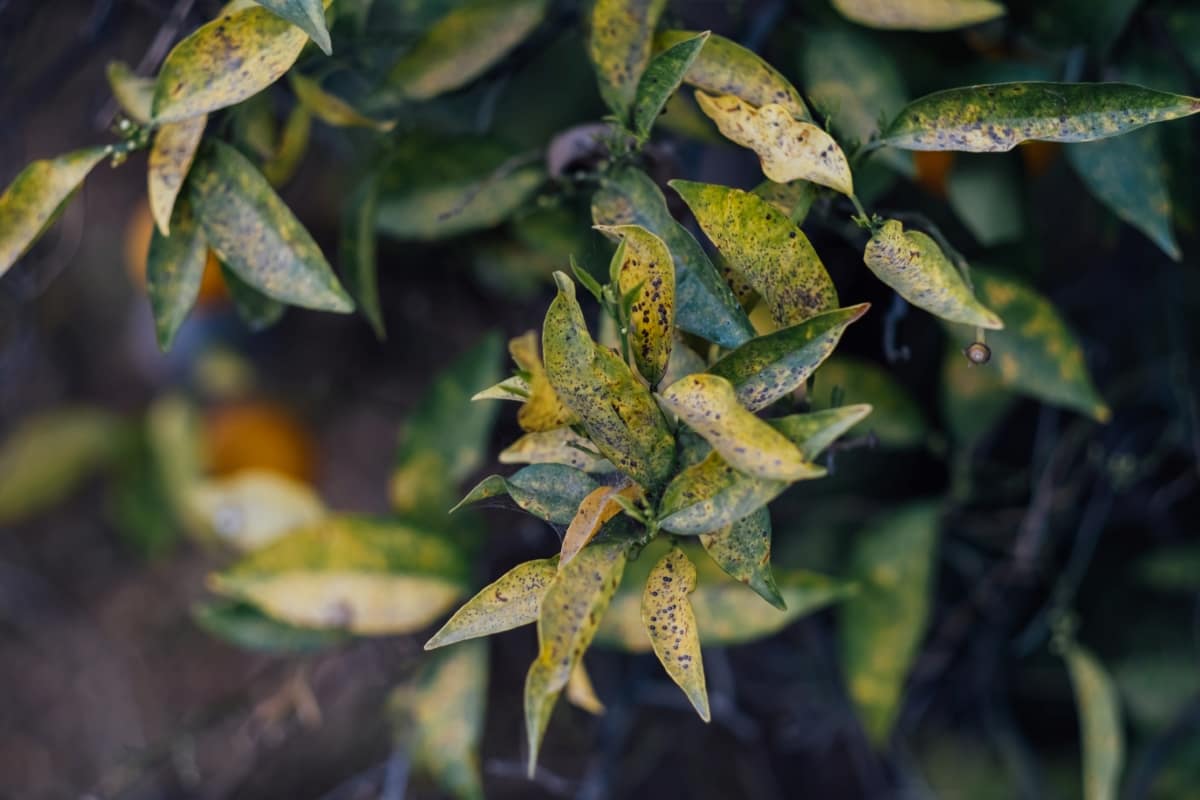In the intricate world of plant pathology, one formidable adversary stands out – Rust Fungus. This microscopic menace, belonging to the Pucciniales order, is a diverse group of fungi notorious for causing diseases in various plant species. Characterized by the distinctive rust-colored spore masses they produce on infected plant parts, these fungi can wreak havoc on crops, ornamental plants, and natural ecosystems.

This article delves into the intriguing realm of Rust Fungus, exploring modes of infection and the devastating impact it has on plant health. We will also discuss preventive measures and management strategies to protect our green allies from the relentless assault of rust diseases.
How to Prevent Rust Fungus in Plants
Understand Rust Fungus Causes and Risk Factors
- Rust fungi thrive in warm and humid environments. High humidity and moderate temperatures create ideal conditions for their growth.
- Poor air circulation around plants can contribute to the development of rust.
- Rust spores can overwinter on infected plant debris, creating a potential source of infection for the next growing season.
- Spores can be carried by wind, water, or even contaminated garden tools.
- Some plants are more prone to rust infections than others. Identifying the specific plants susceptible to rust is crucial for prevention.
- Stressed plants are more vulnerable to diseases, including rust. Ensure proper watering, nutrition, and overall plant care to reduce stress.
How to Identify Rust Fungus: Signs and Symptoms to Look For
- Orange to Rust-Colored Pustules: Look for small, raised pustules on the undersides of leaves or other parts of the plant. These pustules contain rust spores.
- Yellow Spots on Upper Leaf Surface: On the upper leaf surface, you may observe yellow spots corresponding to the location of the pustules on the underside.
- Premature Leaf Drop: Infected leaves may turn yellow, wither, and drop prematurely. This can lead to defoliation and impact overall plant health.
- Stunted Growth: Severe infections can lead to stunted growth and reduced vigor in plants.
- Distinctive Rusty Dust: Touching rust-infected leaves may release powdery, rusty dust, which consists of fungal spores.
How to Prevent Rust Fungus in Agricultural Settings
In agricultural settings, preventing rust fungus involves implementing proactive measures. Optimize air circulation by proper plant spacing, minimizing humidity. Choose rust-resistant plant varieties and practice crop rotation to disrupt the fungus’s life cycle. Regularly inspect crops for early signs and promptly remove and destroy infected plant material.
Employ targeted fungicides, such as copper-based options, according to product guidelines. Implementing these measures collectively forms an integrated approach to mitigate the impact of rust fungus, preserving crop health and yield in agricultural environments.
Integrated Pest Management Strategies for Controlling Rust Fungus
Integrated Pest Management (IPM) strategies offer a holistic approach to control rust fungus effectively. Begin with cultural practices like optimizing plant spacing for better air circulation, reducing humidity, and employing resistant plant varieties. Regular monitoring is essential to detect early signs, facilitating the prompt removal of infected material. Implementing proper watering techniques, such as avoiding overhead irrigation, helps minimize conducive conditions for rust.
In case you missed it: Management of Fungal Diseases on Apple Trees: How to Control and Prevent with Natural and Organic Treatment

Crop rotation disrupts the fungus’s life cycle, and maintaining a diverse ecosystem promotes natural enemies of rust. Consider biological controls, like introducing beneficial organisms, to manage the fungal population. When necessary, targeted fungicides, such as copper-based options, can be used judiciously. The key to successful rust fungus control lies in a comprehensive, well-balanced integration of these IPM strategies, fostering sustainable and environmentally friendly crop protection practices.
Organic Approaches to Preventing Rust Fungus in Gardens
Start by enhancing soil health through organic amendments, promoting a balanced ecosystem. Practice proper plant spacing for improved air circulation and sunlight exposure. Mulch with organic materials to suppress weed growth and reduce soil splashing. Employ companion planting techniques to deter rust-prone plants. Regularly inspect plants for early signs and remove infected material promptly.
Implementing neem oil, a natural fungicide, can help control rust without harming beneficial organisms. Additionally, a water-based baking soda solution can act as a preventive spray. Strengthen plants’ natural defenses by using compost tea or seaweed extracts. Employing these organic strategies not only prevents rust fungus but also supports overall garden resilience and ecological balance.
Chemical Control Methods for Managing Rust Fungus Outbreaks
Chemical control methods are often employed to manage rust fungus outbreaks effectively. Fungicides are a primary tool, and copper-based formulations are widely used for their broad-spectrum antifungal properties. Apply fungicides preventively during the growing season or at the first signs of rust infection. Systemic fungicides, absorbed by the plant and offering longer protection, are an option for severe outbreaks. However, their use should align with product guidelines to minimize environmental impact.
It’s crucial to rotate fungicides to prevent resistance development. Proper timing and thorough coverage of affected plant parts are essential for efficacy. Regular monitoring helps identify the optimal timing for applications. While chemical control is effective, it’s advisable to integrate it with cultural and biological approaches for a more sustainable and comprehensive management strategy, minimizing environmental impact and promoting long-term resilience against rust fungus.
Cultural Practices to Minimize the Impact of Rust Fungus
Cultural practices play a vital role in minimizing the impact of rust fungus. Ensure proper plant spacing to enhance air circulation, reducing humidity that favors rust development. Prune and dispose of infected plant material promptly to prevent spore spread.
In case you missed it: Stem Rust Disease Management in Wheat: Symptoms, Treatment, Chemical, Biological, Natural, and Organic Control

Adopting a strict sanitation regimen by removing fallen leaves and debris prevents the overwintering of rust spores—water plants at the base to avoid wetting foliage. Opt for resistant plant varieties and practice crop rotation to disrupt the rust fungus life cycle. These cultural measures collectively create an unfavorable environment for rust, promoting healthier plants and reducing the risk of severe outbreaks.
Biological Control Agents for Preventing Rust Fungus Infections
Biological control agents offer an eco-friendly approach to prevent rust fungus infections. Beneficial organisms such as predatory mites, parasitic fungi, and bacteria can be employed to suppress rust populations naturally. Ladybugs and lacewings, known for feeding on pest insects, indirectly contribute to rust control by maintaining a balanced ecosystem.
Trichoderma species, a group of beneficial fungi, can compete with rust fungi for resources. Encouraging the presence of these natural enemies helps maintain a harmonious balance in the garden or agricultural setting. By fostering biodiversity and relying on these biological controls, it’s possible to reduce the reliance on chemical interventions, promoting a more sustainable and environmentally friendly approach to managing rust fungus infections.
Environmental Conditions and Their Role in Rust Fungus Prevention
Environmental conditions play a pivotal role in preventing rust fungus. Rust fungi thrive in warm, humid environments, making proper management essential. Adequate air circulation is crucial to reduce humidity around plants, discouraging the growth and spread of rust. Plant spacing should be optimized to enhance ventilation. Avoiding overhead watering and irrigating at the base of plants helps keep foliage dry, creating an unfavorable environment for rust development.
In case you missed it: Rose Rust Disease Management: Symptoms, Treatment, Chemical, Biological, and Organic Control

Additionally, maintaining a clean garden by promptly removing and disposing of infected plant debris minimizes the overwintering potential of rust spores. Monitoring local weather conditions and adjusting gardening practices accordingly, especially during periods of high humidity, is key to rust prevention. By manipulating and controlling these environmental factors, gardeners can significantly reduce the risk of rust fungus outbreaks and promote overall plant health.
Conclusion
In conclusion, preventing rust fungus involves a multi-faceted approach addressing environmental conditions, plant health, and vigilant practices. By understanding the causes, identifying symptoms, and implementing preventive measures, gardeners can significantly minimize the impact of rust fungus.
- Deworming Schedule for Dogs/Puppies: A Beginners Guide
- How to Prevent and Control Parasites in Goats
- Beneficial Insects in Pest Management
- Natural Solutions for Pest Control in Flower Gardens
- Types of Fungicides Used in Agriculture
- Common Issues in the Fruit Development Stage of Pomegranate Farming
- Fruit Development Issues in Papaya: Easy Solutions and Treatment
- Soil-Borne Diseases and How to Protect Your Plants
- Practices to Prevent Disease Spread in the Garden